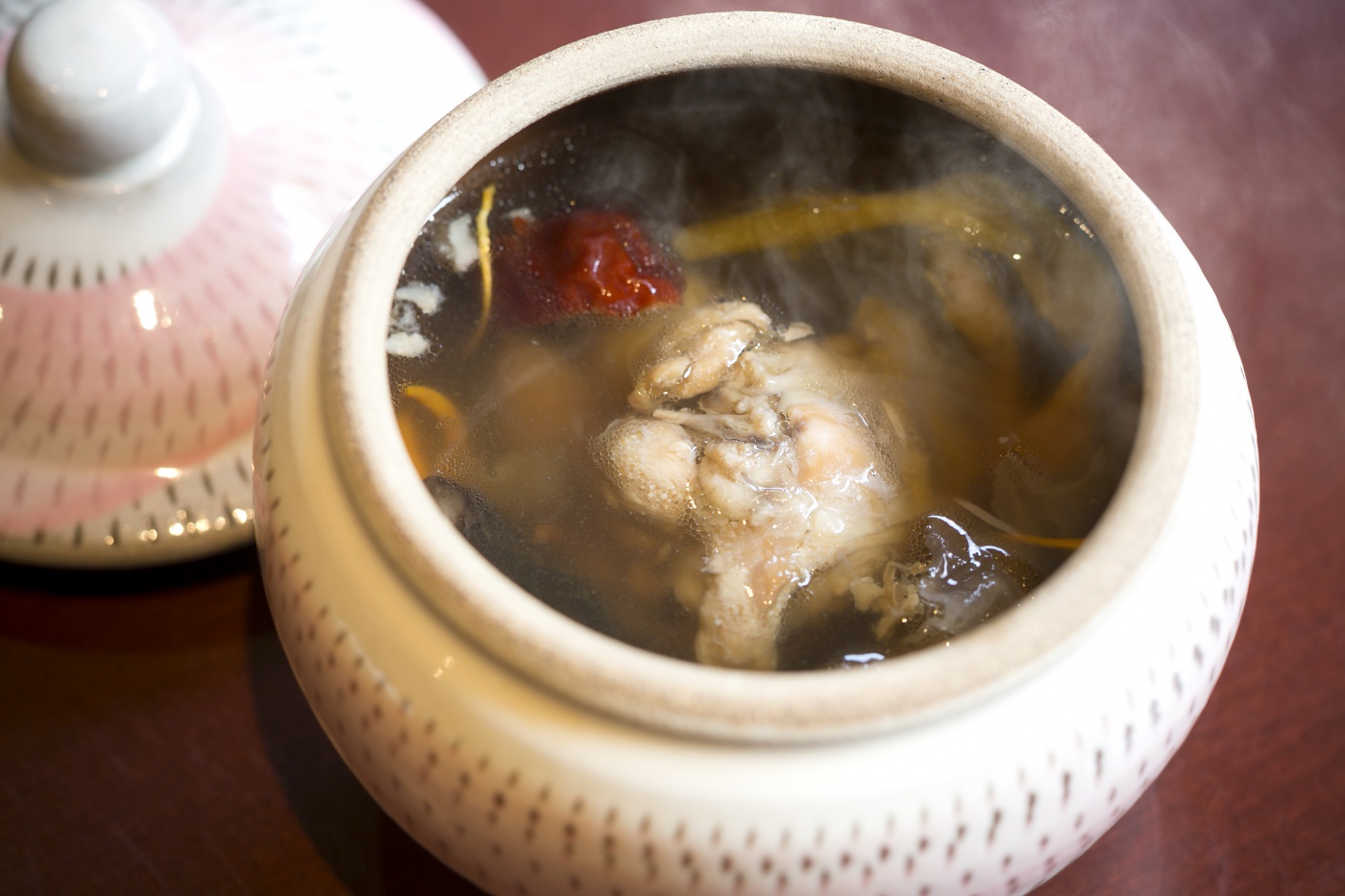In Beppu, a city famous for its many onsen*, there is a method of cooking using geothermal heat to steam food that has been a part of this city’s culture for many centuries. Typically this method employs geothermal steam that is around 100 degrees celsius, but in recent years, steamed food researcher Kazumasa Hirayama has advocated for “low temperature steaming”. One of the first to catch on to this concept was Chinese food chef Shinichiro Maeda. “I had some experience with low temperature steaming food at a hotel I worked at for many years, but once I tasted food steamed at low temperatures using the geothermal steam of Kanawa, I was blown away. I then joined the a group of researchers in Kanawa to learn more about geothermal steam, the effects of temperature, and various ingredients. With that knowledge I was able to open this place, Mushicharo.”
*An onsen is a public hot spring.


Lunch and dinner service at Mushicharo feature only course meals. One of the most important differentiating factors about this restaurant is the actual pot that is used for steaming. Most of the restaurants that serve geothermally steamed food in Beppu use containers made from stone, but here they use specially designed and manufactured pots made from stainless steel. “They are special pots that employ the concepts of steam engineering. The source of the steam in Kanawa is rich in silicic acid, which has a moisturizing effect. The pots we use have a special part attached to them that creates a silkier steam by subdividing the mineral-rich steam as it comes up from underground while also regulating the temperature.” Depending on the ingredient being cooked, the ideal temperature can range from 45 to 95 degrees Celsius. “65 for chicken, 42 for eel…” I listened as the chef recited the exact temperatures he uses to steam each individual ingredient. He seemed closer to a scientist than a chef. As we talked, he was preparing one of their most popular dishes, a soup that is made using only steam to draw out the natural flavors and moisture from the ingredients.
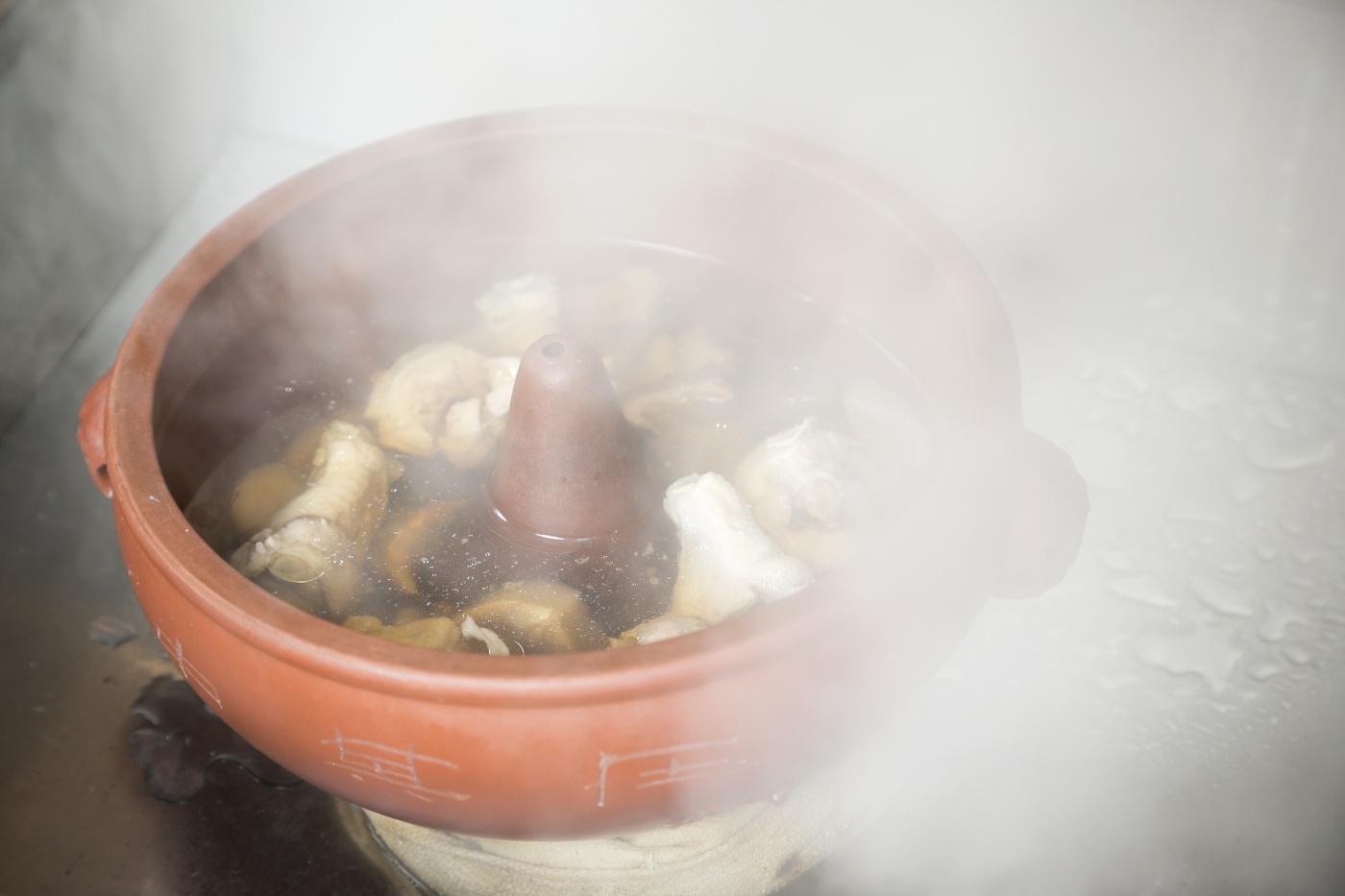
Another technique important to chef Maeda’s kitchen is the “50 degree wash”. Before being steamed and served, each and every ingredient is first washed in 50 degree celsius water to remove any and all dirt and impurities. “I even wash the sashimi — in 50 degree water is doesn’t cook. On the other hand, it does remove some of the excess fat and oil, making the sashimi have a lighter taste. With the washing and steaming at low temperature, all of the flavor and nutritional value becomes locked inside each bite of food,” he said. By the way, almost all of the vegetables used here are produced in Oita Prefecture.
I ordered the lunch course, made with the “50 degree wash” and low temperature steam techniques. The lunch came served on a beautiful dish — just the visual impact of all the colorful ingredients alone was enough to get me excited. If I hadn’t known how much effort went into preparing this plate of food, I might have thought it looked easy. “These are my personal standards. Each dish that made up this medicinal Chinese lunch course flowed into the next almost like music. The steamed soup in particular had a delicate, yet deep and savory flavor. “Geothermal steam in a way is a living thing, so it makes the taste a little bit different every day.”
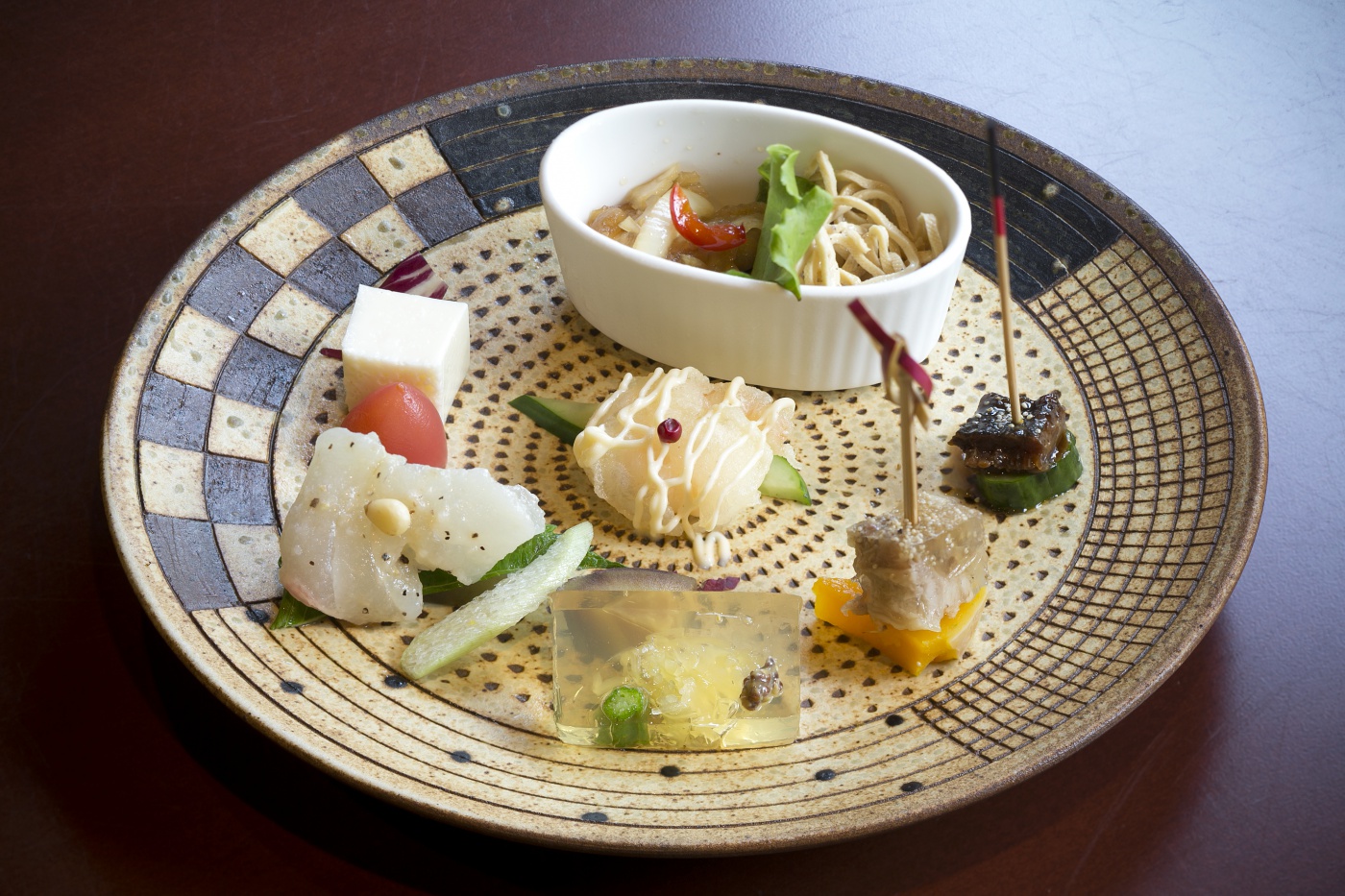
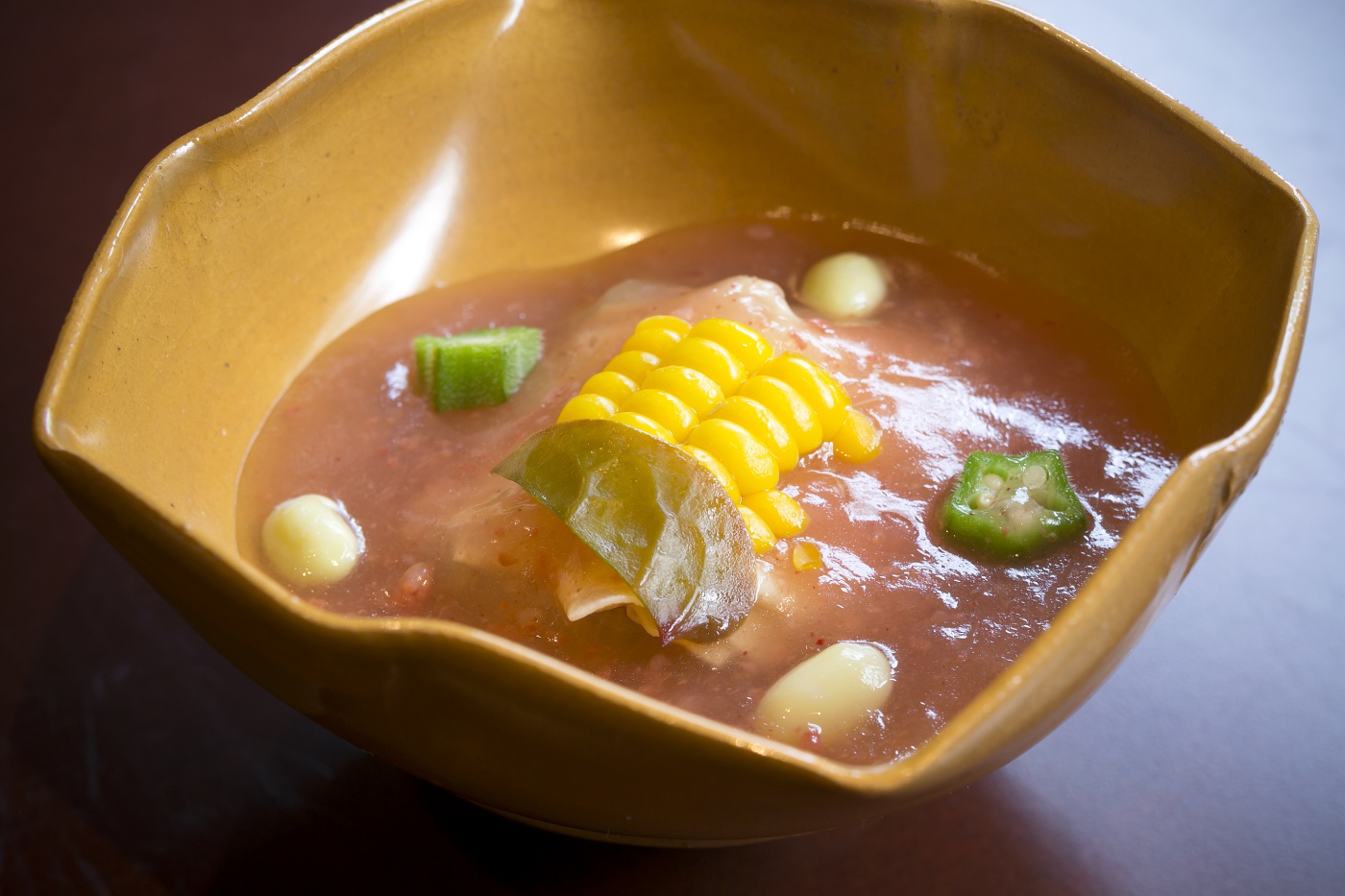
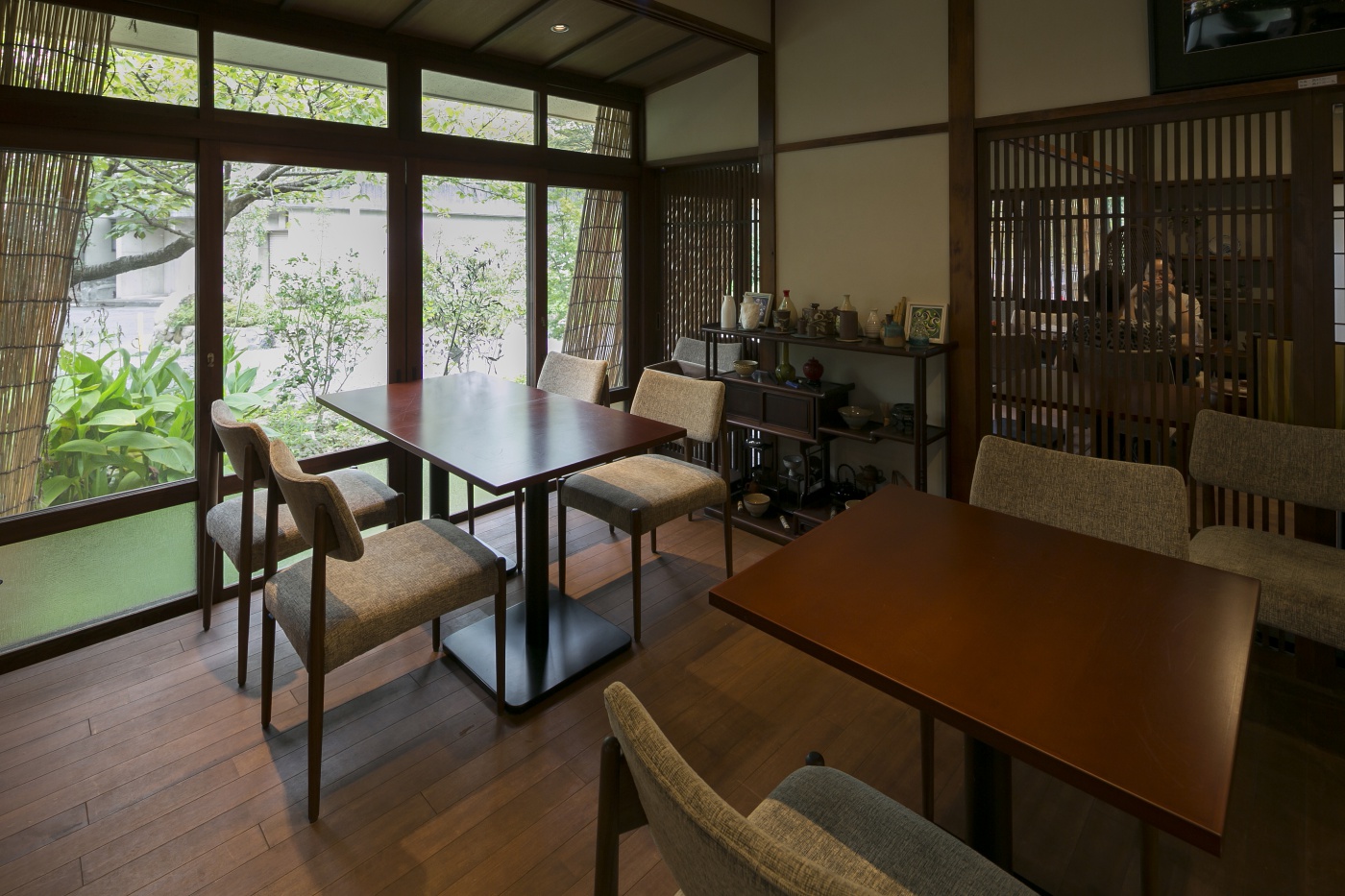
Maeda-san’s research in ongoing, including topics such as cooking with wild game and low temperature dry steaming. I’m looking forward to what future food innovations come out of his free and natural cooking style. The portions were generous, and I was quite full after dessert, but as evening drew near I started to get hungry again right on time. People say that medicinal Chinese cooking improves blood circulation, so maybe that’s why.
